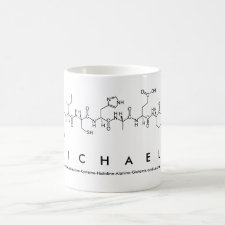
Authors: Kirsch N, Alexander C, Lübke M, Whitcombe MJ, Vulfson EN
Article Title: Enhancement of selectivity of imprinted polymers via post-imprinting modification of recognition sites.
Publication date: 2000
Journal: Polymer
Volume: 41
Issue: (15)
Page numbers: 5583-5590.
DOI: 10.1016/S0032-3861(99)00782-X
Abstract: Imprinted polymers were synthesized for the recognition of small nitrogen heterocycles such as pyridine and quinoline using a new variant of the sacrificial spacer methodology employing silyl ether derivatized templates designed to act as N-H-O 'isosteres' for binding the targets. The cleavage of the labile silyl ether bond led to the formation of sites bearing phenolic residues. The polymers prepared with DVB as the cross- linker were capable of discriminating between pyridine, quinoline and acridine in hexane but the effect did not exceed 20%. In order to improve the recognition properties of these materials, a post-imprinting modification of the polymers was performed using acyl chlorides of varying size. This simple approach, carried out after the removal of the templates, resulted in an enhanced selectivity (by factors of up to 5- fold) for binding of pyridine and quinoline by the modified polymers. Similar effects were observed with EGDMA-based imprinted polymers. The results obtained suggest that post- imprinting chemical modification can be an effective tool to engender 'size' selectivity in binding of even small molecules containing a paucity of functional groups. (C) 2000 Elsevier Science Ltd. All rights reserved



Join the Society for Molecular Imprinting

New items RSS feed
Sign-up for e-mail updates:
Choose between receiving an occasional newsletter or more frequent e-mail alerts.
Click here to go to the sign-up page.
Is your name elemental or peptidic? Enter your name and find out by clicking either of the buttons below!
Other products you may like:
 MIPdatabase
MIPdatabase









